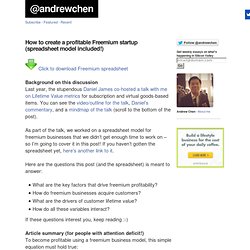

Raphael SEGUY
Search. Help. Pearltrees videos. Cool stuff. Trendy economic subjects. Analyse+marketing 1. 7 Keys to Creating Social Media Strategy for Your Brand. In the past few weeks I’ve experienced a decent amount of spam from social networking sites ranging from people marketing their books, selling “make money online” information, to promoting their personal brand.

It’s indicative of the fact that individuals and businesses are viewing the space seriously as it takes on the mainstream spotlight. There are many ways to utilize social media to boost your brand. The key is to have a strategy around building your social proof. Let The Truth Be Told People naturally look for social proof in any given situation. Social proof is a weapon of influence by which we replicate what we see others do. For example, if you see a bunch of people lining up outside of a restaurant you tend to think the food is good or better yet, it MUSTbe good.
Social proof is especially powerful in social media because of the available information from Twitter followers to LinkedIn connections. The truth is – social media is a platform for engagement and building communities. 1. McKinsey: What Matters: Using technology to improve workforce co. Com: Consumer trends and insights from around the. Top 10 Web Collaboration Tools (That Aren't Google Wave) -
Business Risk Report pour 2009 : le Top 10 par Ernst&Young. Swarm Theory. I used to think ants knew what they were doing.

The ones marching across my kitchen counter looked so confident, I just figured they had a plan, knew where they were going and what needed to be done. How else could ants organize highways, build elaborate nests, stage epic raids, and do all the other things ants do? Turns out I was wrong. Ants aren't clever little engineers, architects, or warriors after all—at least not as individuals. When it comes to deciding what to do next, most ants don't have a clue. How do we explain, then, the success of Earth's 12,000 or so known ant species?
"Ants aren't smart," Gordon says. Where this intelligence comes from raises a fundamental question in nature: How do the simple actions of individuals add up to the complex behavior of a group? One key to an ant colony, for example, is that no one's in charge. About the MIX. Because you aim high...

There may be some folks who are content to work on trivial problems, but you're not one of them. You're excited by the chance to bring your experience and imagination to an important, global-scale project. Because you're looking for an edge... You're constantly hunting for provocative ideas and inspiring models to boost your organization's performance, and your own. On the MIX you'll find game-changing (and battle-tested) ideas, kindred spirits, and a wealth of resources to help you and your team reach new highs. Because you have a great idea...
Every radical new management practice starts out as a courageous "What if? "
How to create a profitable Freemium startup (spreadsheet model i. Click to download Freemium spreadsheetBackground on this discussion Last year, the stupendous Daniel James co-hosted a talk with me on Lifetime Value metrics for subscription and virtual goods-based items.

You can see the video/outline for the talk, Daniel’s commentary, and a mindmap of the talk (scroll to the bottom of the post). As part of the talk, we worked on a spreadsheet model for freemium businesses that we didn’t get enough time to work on – so I’m going to cover it in this post! If you haven’t gotten the spreadsheet yet, here’s another link to it. Here are the questions this post (and the spreadsheet) is meant to answer: What are the key factors that drive freemium profitability? If these questions interest you, keep reading :-) Article summary (for people with attention deficit!) Lifetime value > Cost per acquisition + Cost of service (paying & free) There are lots of different factors that influence profitability, including: Now for all the gory details… LTV = 1/(1-R) * rev.